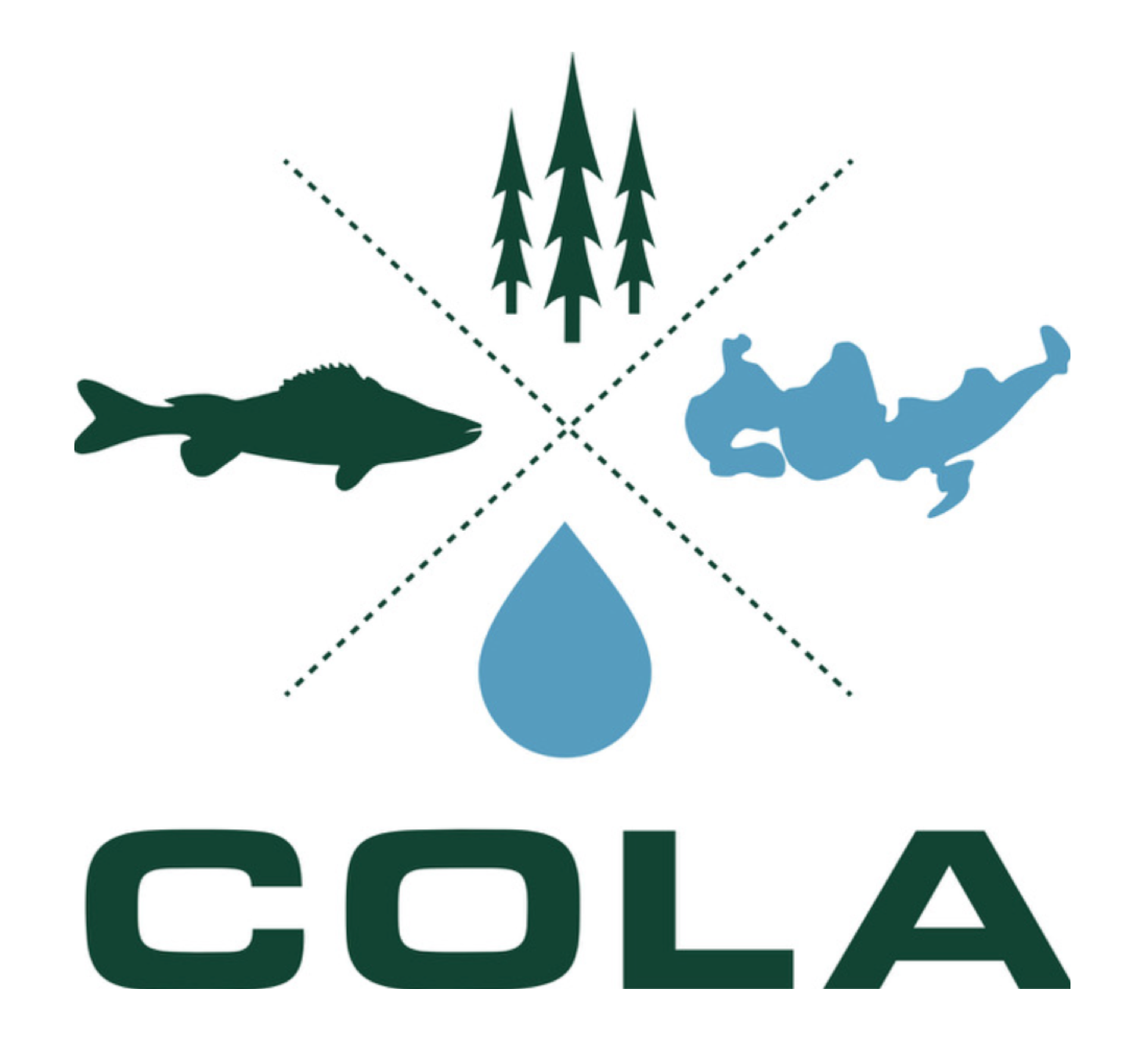The University of Wisconsin-Stevens Point Geographic Information Systems Center (GIS Center) selected the Courte Oreilles Lakes Association (COLA) for its annual Outstanding Partner Award. The award recognizes COLA’s long-term commitment to gathering scientific and geographic evidence at the watershed scale and applying it to protect the two-story fishery on Lac Courte Oreilles.
COLA, Sawyer County Board, and Zoning Committee Reach Positive Outcome for Fleur de Lane Rezoning Request
Positive Outcome for Fleur de Lane Rezoning Request
The Courte Oreilles Lakes Association (COLA) has helped reach a positive outcome with the Sawyer County Board and Zoning Committee, regarding the Billings Family Trust request to rezone a property adjacent to Fleur de Lane. COLA worked with representatives from the Billings Family Trust, Fleur de Lane neighbors, the two lawyers involved, and Dale Olson—Zoning and Conservation Administrator—to find a solution to the rezone dilemma. See the Lac Courte Oreilles Districts Zone map here.
COLA Joins Clean Wisconsin and 20 Conservation Groups to Counter State Legislature's Proposal to Ease Phosphorus Standards
A letter related to Wisconsin’s phosphorus water-quality standards circulated through the WI State Legislature for sign-ons. It asked Wisconsin's Congressional Delegation to allow the state to revise phosphorus standards by loosening phosphorus regulations. Clean Wisconsin sent a response on behalf of the conservation community. The Wisconsin State Journal covered the news and its impacts.
New Study Helps Lakes and Farms Address Potential Erosion Issues
The University of Wisconsin-Stevens Point Geographic Information Systems Center (GIS Center) has completed a study that contains the modeling and mapping necessary to help both farmers and lake associations in the Upper Couderay River Watershed identify farm parcels most vulnerable to erosion. See full story here, which includes:
COLA Featured in UWSP Geo News as Part of Award-Winning Project
A UW-Stevens Point Geodesign Project received an award for the geodesign methods and GIS techniques it used to analyze the potential vulnerability of agricultural lands to erosion on lands surrounding Lac Courte Oreilles. The analysis summarizes indicators or soil erosion by individual tax parcels. The results provide conservationists with tools to identify landowners and future collaborators in the fight to limit erosion and keep nutrients on agricultural fields and out of Lac Courte Oreilles. See the feature in UWSP Geo News.
COLA Achieves Negotiated Settlement and Petition Stipulation
Negotiated Settlement & Petition Stipulation - March 31, 2017
Negotiated Settlement Overview - Includes details of this settlement and the wins for COLA and Lac Courte Oreilles, plus next steps in that rulemaking process by the Wisconsin Department of Natural Resources in Madison, WI, which include approval from Governor Scott Walker and the Wisconsin state legislature.
Petition Stipulation - This stipulation to the settlement above outlines that petitioners' claims one through four (1-4) from the original petition for judicial review filed in June 2016 are included in the settlement and that petitioners' claim five (5) shall be dismissed without prejudice. COLA and the LCO Tribe, however, do retain the right to revisit and address claim (5) as a separate action.
See Full Press Release Here - Details include the WDNR's timeline, which starts with approval by Governor Walker after he receives the new proposed standard from the WDNR by May 15, and COLA's offer of $100,000 to the cranberry operations on LCO to assist with this solution.
Pike Restoration Project on Lac Courte Oreilles
COLA is a partner in the Lake Courte Oreilles Esox Recovery Plan on Lac Courte Oreilles. The idea for this plan was introduced by the WDNR in 2016 and is now the joint effort of Muskies Inc, Walleyes Forever, COLA, the LCO Tribe, and the WDNR.
COLA Develops New Land Use Policy Regarding Zoning Practices
COLA’s newly updated Land Use Policy Statement is designed to protect Lac Courte Oreilles from rezoning. Allowing properties that are currently designated as agricultural and forestry to be rezoned as residential opens up development around the lake that would directly impact water quality in the form of additional run-off and the load of additional septic systems. See the Lac Courte Oreilles Zone Districts map for complete details
Anglers Asked to Cull Small Pike from Lac Courte Oreilles
Musky decline is the topic of this Article in the Sawyer County Record on February 2, 2017. At the Sawyer County Fisheries Forum on Jan. 25, DNR fishery manager Max Wolter said Lac Courte Oreilles was “once a world-class musky fishing destination.” The article goes on to say, "The musky size potential is still world-class, but the current numbers of muskies on the 5,139-acre lake are very low, probably less than 300 adults compared to the historical average of 1,000 adults." The reasons for decreasing musky include very low natural reproduction rates, very little stocking success, decline of suitable spawning habitat, and a documented 27 percent more phosphorus from agriculture and human development. Article also includes proposed ideas for addressing the problem as well as mention of COLA’s involvement.
Year-End Update and Chance to Contribute
Much progress has been made! We do need to continue our aggressive actions, however, to preserve our property values as well as the legacy of our great lakes for our children. But, momentum is growing and COLA has never been closer to implementation. Here is what’s in place, what’s working, what is still left to do, and how you can help get us to those finish lines with a year-end contribution.

